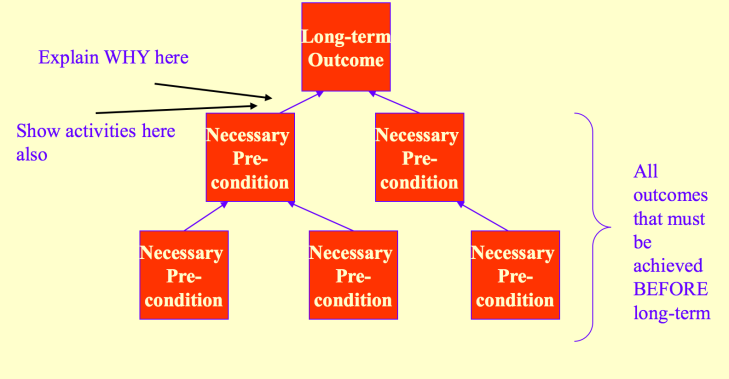Theory of Change describes the link between outcomes and activities and explains how and why and the desired change is expected from planned goals. It explains processes of change by outlining causal linkages in an initiative, i.e., its short-term, mid-term, and long-term outcomes. Theory of Change has the power to radically enhance the capacity of social change and organizations, and initiatives to achieve their goals and their impact.


The steps of the theory of change are, identify the problems and convey key people to address problems before the theory of change begins. Conducting research in community and society to better understand the problems before having a clear theory and revisited when new questions emerge as a result. The setting of initial goals, enlarge stakeholder groups, team-building and forming collaboration conduct thoroughly.
The theory of change process includes steps to elicit a conceptually tight and highly detailed explanation for what changes need to occur and their relation to one another by planning an initiative. We have to change framework and narrative to demonstrates and to funders that our initiative is well-thought-out, practical, and measurable, and that we have a process in place to be accountable for results, as another step – raise funds. Developing of action and evaluation plan; which covers identified interventions, and strategies, provide the basis for deciding which specific actions will bring about the expected angle of change as well as identifies indicators of success and specifies the details of who is expected to change and how much. These are the basis for developing the methodologies to measure the indicators for achieving the outcomes.
We can also revise plans (mid-course corrections); because the theory of change is dynamic and we should check the framework that helps guide decisions about how to make adjustments by clearly showing the relationship between outcomes. Evaluation the main steps of the theory of change; this is the framework against which the success and obstacles of our initiative will be evaluated. Because we will have articulated all the assumptions, justification and contextual conditions we believe affect our likelihood of success, lessons about how these changes, expand, or prove correct will be evident. Reporting part provides the basis against which we can report our achievements, setback and lessons, and our evaluation results.
Theory of Change has a clear and testable hypothesis about how the change will occur that not only allows us to be accountable for results but also makes our results more credible and presumptive because they were predicted to occur in a certain way. Theory of Change visualizes the representation of the change we want to see in our community and how we expect it to come about in the community. This is a fine design for evaluation with measurable indicators of success identified an agreement between stakeholders and community about what defines success and what it takes to get there. And finally, it is a powerful communication tool to capture the complexity of our initial goals and achievements.
Sources:
- https://en.wikipedia.org/wiki/Theory_of_change
- http://intranet.tdmu.edu.ua/data/kafedra/internal/distance/lectures_stud/English/1%20course/Leadership%20in%20Nursing/5%20People%20and%20the%20Process%20of%20Change.htm
- https://www.entrepreneur.com/article/292467
- https://www.ncbi.nlm.nih.gov/pmc/articles/PMC4070516/http://meera.snre.umich.edu/evaluation-what-it-and-why-do-it
- https://www.ncbi.nlm.nih.gov/pmc/articles/PMC4131424
https://saglamproxy.com
ReplyDeletemetin2 proxy
proxy satın al
knight online proxy
mobil proxy satın al
4X7
Делегація послів різних країн завітала до Державного податкового університету https://dpu.edu.ua/novyny/delehatsiia-posliv-riznykh-krain-zavitala-do-dpu
ReplyDelete